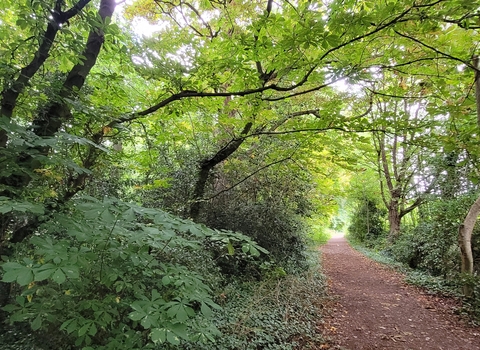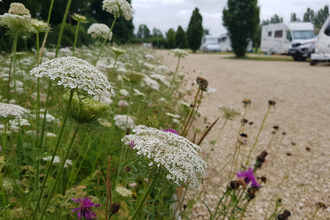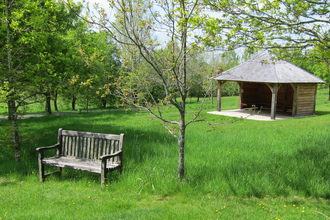This small block of deciduous woodland to the northeast of Malvern is sandwiched between a residential area and retail park. Considering its size, the woodland features a high diversity of tree species and a healthy number of mature-to-veteran tree specimens that provide dead wood resources for wildlife such as nesting and roosting habitat for birds and bats. A small stream-like ditch also runs along the southern boundary of the site.
The woodland is known to have occupied this site for at least the last 200 years but it also contains several species that are indicators of ancient woodland (including wild service tree, wild garlic, wood anemone, stinking iris and dog’s mercury), suggesting that it may have been wooded for much longer.
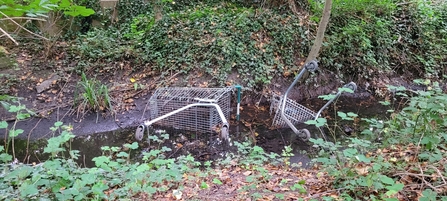
Shopping trolleys, Memorial Woodland by Becca Bratt
The site has the potential to be a haven for both local residents and wildlife but is impacted by disturbance from high footfall including unofficial pathways created through the woodland and anti-social behaviour such as fire setting and littering. Non-native, invasive species such as three-cornered leek, cherry laurel, rhododendron and Virginia creeper are also competing with native vegetation for space, light and nutrients.
In January 2023, Malvern Hills District Council received a grant from Natural Networks to diversify and enhance the habitats on site while providing safe, welcoming areas for visitors to walk and sit. Specifically, planned enhancements to the woodland include:
-
Management of vegetation adjacent to main pathways to increase light levels and encourage native woodland flora. This includes coppicing and/or pollarding of small trees, limb management of larger trees over pathways and cutting back bramble.
-
Bulb and plug planting along these lighter, warmer ‘rides’ that aims to increase diversity, providing pollen and nectar for insects across the seasons.
-
Coppicing selected shrubs on a 10-year rotation to diversify age and structure.
-
Dead-hedge creation using timber / brash from tree works to create dense habitat and guide people towards official pathways.
-
Creation of habitat piles utilising logs from tree works to increase the availability of dead wood resources.
-
Removal of non-native, invasive species such as cotoneaster, laurel and Virginia creeper.
-
De-silting and reprofiling of the ditch to increase its water holding capacity and provide space for marginal / bog plants.
-
Installation of bee posts in sunny spots to provide nesting habitat for solitary bees.
-
Interpretation panel to inform visitors of the rationale behind the woodland enhancement works.
-
Installation of two insect house gabion benches to double up as a resting place for people, and sheltering / overwintering habitat for invertebrates, amphibians, reptiles and small mammals.
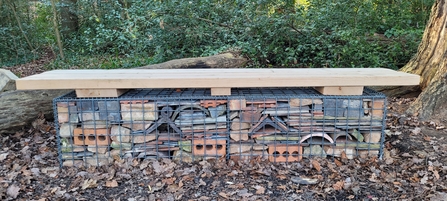
Insect hotel bench by Becca Bratt
The enhancements aim to breathe new life into this little woodland, creating a more welcoming, safe place for people while boosting biodiversity. The woodland will be renamed as a memorial to lost loved ones, acting as a reflective, peaceful space for visitors.

